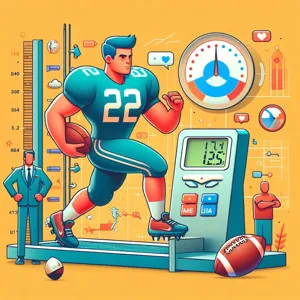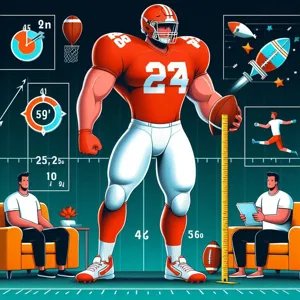In the ever-evolving world of PC gaming, performance is key, and one of the most significant upgrades you can make is to your storage solution.
As game files grow larger and loading times become a critical factor for immersive gameplay, choosing the right SSD can be a game-changer. With 2023 bringing a plethora of options to the market, from lightning-fast NVMe drives to reliable SATA alternatives, navigating this landscape can feel overwhelming. But fear not! In this comprehensive guide, we’ll break down everything you need to know about selecting the best SSD for your gaming rig. From understanding the differences in speeds and capacities to exploring the latest technologies that can enhance your gaming experience, we’ll help you make an informed decision that elevates your gameplay to new heights. Get ready to level up your game and say goodbye to lagging load screens as we dive into the world of SSDs!
1. Introduction to SSDs and Their Importance in Gaming
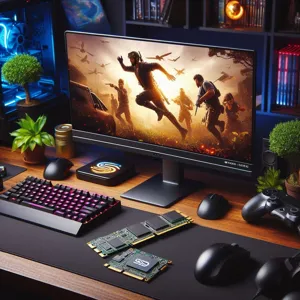
In the ever-evolving landscape of PC gaming, the quest for speed and performance takes center stage. Enter the Solid State Drive (SSD)—a game-changing component that has transformed how we experience gaming. Unlike traditional Hard Disk Drives (HDDs), SSDs leverage flash memory to provide lightning-fast data access, significantly reducing load times and enhancing overall system responsiveness. In 2023, the importance of selecting the right SSD cannot be overstated, as it plays a pivotal role in delivering the immersive, lag-free gaming experiences that modern titles demand.
With game worlds becoming increasingly expansive and intricate, the ability to load textures, assets, and environments quickly is essential. An SSD not only minimizes the frustrating wait times during game launches and level transitions but also improves in-game performance by facilitating faster file transfers and smoother streaming of high-resolution graphics. This means you can jump into the action without missing a beat, allowing for a more engaging and uninterrupted gameplay experience.
Moreover, as game developers continue to push the boundaries of technology with larger file sizes and more complex mechanics, having an SSD has shifted from being a luxury to a necessity for serious gamers. From the adrenaline-pumping thrill of first-person shooters to the intricate strategies of role-playing games, an SSD ensures that you remain competitive, agile, and fully immersed in your gaming universe. In this guide, we’ll delve into the various types of SSDs on the market, key features to consider, and tips on choosing the best SSD that will not only enhance your gaming experience but also future-proof your setup for the exciting advancements yet to come.
2. Understanding SSD Types: SATA vs. NVMe
When it comes to choosing the best SSD for PC gaming in 2023, understanding the differences between SATA and NVMe SSDs is crucial. Both types offer distinct advantages and are suited to different gaming needs, so let’s break them down.
**SATA SSDs** are the traditional storage solution that many gamers are familiar with. Using the same interface as traditional hard drives, SATA (Serial ATA) SSDs are limited by the speed of the SATA III connection, which maxes out around 600 MB/s. While this is significantly faster than spinning hard drives, it pales in comparison to the speeds offered by more advanced options. SATA SSDs are still a solid choice for budget-conscious gamers or those looking to upgrade from an older system, as they provide faster load times and a smoother gaming experience than mechanical drives.
On the other hand, **NVMe (Non-Volatile Memory Express) SSDs** are the new kids on the block, taking full advantage of the PCIe (Peripheral Component Interconnect Express) interface. This technology allows for much higher data transfer speeds, often exceeding 3,000 MB/s and sometimes reaching upwards of 7,000 MB/s with the latest PCIe 4.0 models. This dramatic increase in speed translates to lightning-fast load times, reduced game stuttering, and an overall snappier performance, particularly in open-world games or those with large, detailed environments. If you’re aiming for the best gaming experience possible, NVMe SSDs are worth the investment, especially as game developers continue to push the boundaries of graphics and complexity.
Ultimately, the choice between SATA and NVMe SSDs will depend on your specific gaming needs, budget, and the capabilities of your existing hardware. If your motherboard supports NVMe and you crave the fastest load times and enhanced performance in modern titles, investing in an NVMe SSD is a no-brainer. However, if you’re looking for a more economical option or are upgrading an older system, a SATA SSD can still provide a significant boost to your gaming experience. Whichever path you choose, understanding these two types of SSDs will help you make an informed decision that elevates your gaming setup to the next level.
3. Key Factors to Consider When Choosing an SSD

When it comes to enhancing your gaming experience, selecting the right SSD is crucial. With a plethora of options flooding the market, focusing on key factors can streamline your decision-making process and ensure you make the best choice for your gaming rig. Here are the most important elements to consider:
**1. Storage Capacity:** The first thing to think about is how much space you actually need. Modern games can easily exceed 100GB, and with the growing size of game titles, a 1TB SSD is quickly becoming the standard for serious gamers. If you plan to install multiple games or run resource-heavy applications, consider opting for a higher capacity SSD, such as 2TB or more, to accommodate your library without the constant need to uninstall and reinstall games.
**2. Speed and Performance:** The performance of an SSD is heavily influenced by its read and write speeds, measured in megabytes per second (MB/s). NVMe (Non-Volatile Memory Express) SSDs offer significantly faster speeds compared to SATA SSDs, drastically reducing load times and providing a smoother gaming experience. Look for SSDs that boast read speeds of 3,000 MB/s or higher for optimal performance.
**3. Form Factor:** The physical size and shape of the SSD can impact compatibility with your gaming setup. M.2 drives are compact and can be installed directly onto the motherboard, while 2.5-inch SATA drives require a dedicated bay. Make sure your motherboard supports the form factor you choose, and consider whether you want the sleekness of an M.2 SSD or the simplicity of a traditional 2.5-inch model.
**4. Endurance and Reliability:** Gamers often overlook the durability of an SSD, but it’s essential for long-term performance. Look for drives with high endurance ratings, measured in terabytes written (TBW), which indicate how much data can be written to the SSD over its lifespan. A reliable SSD can withstand the rigors of constant gaming without degradation in performance, ensuring your data remains safe and accessible.
**5. Price-to-Performance Ratio:** While it’s tempting to go for the most expensive option on the market, consider the value you’re getting for your money. Many mid-range SSDs deliver excellent performance without breaking the bank. Compare different models based on their specifications and user reviews to find a balance between cost and performance that suits your gaming needs.
By carefully evaluating these key factors when choosing an SSD, you can level up your gaming experience in 2023 and beyond. Whether you prioritize speed, capacity, or reliability, the right SSD will keep your games running smoothly and enhance your overall performance on the battlefield.
4. Storage Capacity: How Much Do You Really Need?
When it comes to choosing an SSD for your gaming rig, one of the most crucial factors to consider is storage capacity. In the ever-expanding landscape of modern gaming, where titles can easily exceed 100GB, understanding how much storage you truly need is essential for an optimal gaming experience.
First, think about your gaming habits. Are you a casual player who enjoys a few titles at a time, or a hardcore gamer who loves to have the latest releases and a vast library at your fingertips? If you fall into the latter category, an SSD with a larger capacity—such as 2TB or even 4TB—may be worth the investment. This not only allows you to store multiple large games without the constant hassle of uninstalling and reinstalling, but it also enables you to maintain your favorite classics alongside the latest blockbusters.
Moreover, consider the space needed for downloadable content (DLC), patches, and upcoming expansions. Many games receive regular updates that can add substantial size, and having extra capacity ensures you won’t run into issues when it’s time to download that hot new expansion pack.
However, if you find yourself primarily playing a handful of games, a 1TB SSD might suffice. This size can accommodate several popular titles while still leaving room for essential software and the occasional indie gem. In addition, keep in mind that SSD prices have been steadily decreasing, making it more feasible to opt for higher capacities without breaking the bank.
Lastly, think about your future gaming plans. With next-gen titles and advancements in graphics and game design, the file sizes are only expected to grow. Investing in a higher-capacity SSD not only prepares you for the current gaming landscape but also future-proofs your setup against the ever-increasing demands of modern gaming. Ultimately, selecting the right storage capacity is about striking a balance between your current needs and your future gaming ambitions, ensuring you have a seamless and enjoyable experience.
5. Speed and Performance: Read and Write Speeds Explained
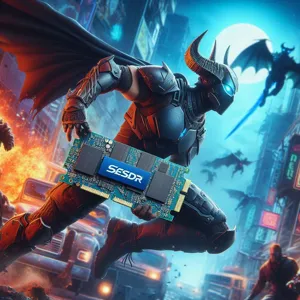
When it comes to choosing the best solid-state drive (SSD) for PC gaming in 2023, understanding speed and performance is crucial. The read and write speeds of an SSD are two key metrics that can significantly impact your gaming experience.
**Read Speed** refers to how quickly data can be accessed from the SSD. This is particularly important for loading games and levels. A higher read speed means shorter loading times, allowing you to jump into the action much faster. For instance, games with expansive open worlds or detailed graphics, such as “Cyberpunk 2077” or “Elden Ring,” benefit greatly from rapid data access, enabling seamless transitions between areas and reducing the chance of lag or stuttering.
On the other hand, **Write Speed** is equally important, as it determines how quickly data can be saved to the SSD. This factor comes into play during game installations, updates, and when saving game progress. If you’re frequently downloading large game files or updates, opting for an SSD with high write speeds ensures that you spend less time waiting and more time playing.
In 2023, many gamers are looking at NVMe (Non-Volatile Memory Express) SSDs, which utilize the PCIe interface to deliver significantly higher read and write speeds compared to traditional SATA SSDs. While SATA SSDs may offer decent performance, NVMe drives can offer speeds exceeding 3,000 MB/s for read operations and 2,500 MB/s or more for writes, drastically improving load times and overall system responsiveness.
It’s also worth considering the **I/O Operations Per Second (IOPS)**, which indicates how well the SSD can manage multiple tasks simultaneously. This metric is especially relevant for gamers who run multiple applications or background processes while gaming.
In summary, when selecting an SSD for gaming in 2023, prioritize high read and write speeds to ensure optimal performance. The right SSD can not only enhance your gaming experience but also prolong the lifespan of your hardware, keeping your system running smoothly for years to come.
6. Endurance and Lifetime: What You Need to Know
When diving into the world of SSDs for gaming, understanding endurance and lifetime is crucial for ensuring your investment pays off in the long run. Endurance is essentially a measurement of how much data can be written to the SSD over its lifespan, typically represented in terabytes written (TBW) or drive writes per day (DWPD). This metric indicates how durable the drive is under heavy usage, which is particularly important for gamers who frequently install and uninstall large games, updates, and patches.
In 2023, many SSDs come equipped with advanced technologies such as 3D NAND, which enhances durability and performance. However, not all SSDs are created equal—some are designed for casual use, while others cater specifically to high-performance gaming scenarios. If you’re a gamer who pushes the limits with extensive data transfer, look for SSDs with higher TBW ratings. This will ensure that your drive can handle the demands of intensive gaming sessions without compromising on performance.
Moreover, consider the warranty offered by the manufacturer. A longer warranty often reflects confidence in the product’s endurance and reliability. Brands that stand behind their SSDs typically provide a warranty of three to five years, allowing you peace of mind as you power through your gaming adventures.
Lastly, keep an eye out for SSDs equipped with thermal throttling technology. Gaming can generate significant heat, and without proper heat management, your SSD’s performance can suffer. Drives with effective heat sinks or thermal management features ensure consistent performance, preventing slowdowns during those critical moments in a game. By understanding these aspects of endurance and lifetime, you can make an informed choice that not only enhances your gaming experience but also ensures your SSD stands the test of time.
7. Form Factors: M.2 vs. 2.5-Inch SSDs
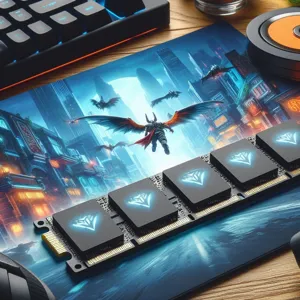
When it comes to upgrading your gaming rig, one of the most critical decisions you’ll face is choosing the right form factor for your SSD. In 2023, the two predominant options are M.2 and 2.5-inch SSDs, each offering distinct advantages that cater to different gaming needs and setups.
**M.2 SSDs** have surged in popularity, and for good reason. These sleek, compact drives connect directly to the motherboard, eliminating the need for cumbersome cables or mounting brackets. This streamlined design not only helps with airflow within your case but also makes installation a breeze. M.2 SSDs typically offer faster read and write speeds, especially when using the NVMe protocol, which can significantly reduce load times in your favorite games and enhance overall system responsiveness. If you’re looking for top-tier performance and your motherboard supports it, an M.2 SSD could be the best choice for maximizing your gaming experience.
On the other hand, **2.5-inch SSDs** remain a reliable and versatile option. These drives are slightly bulkier and often come with a SATA interface, which provides solid performance but may not match the blistering speeds of NVMe M.2 drives. However, their compatibility is a significant advantage—almost all desktops and laptops have a 2.5-inch bay, making these drives easy to install across a wide variety of systems. If you’re upgrading an older rig or looking for a cost-effective solution, a 2.5-inch SSD can offer a substantial boost in speed compared to traditional hard drives without breaking the bank.
Ultimately, the choice between M.2 and 2.5-inch SSDs hinges on your specific needs and hardware compatibility. If you crave lightning-fast loading times and have the capability to harness the latest technology, opt for an M.2 SSD. Conversely, if you prioritize compatibility and ease of installation, a 2.5-inch SSD is a dependable choice that will still deliver significant performance enhancements for your gaming adventures.
8. Brands to Trust: Top SSD Manufacturers in 2023
When it comes to selecting an SSD for your gaming rig in 2023, choosing a reputable brand is just as important as the specifications themselves. In a market flooded with options, aligning yourself with trusted manufacturers can make all the difference in performance, reliability, and overall gaming experience. Here are some of the leading SSD brands that gamers have come to rely on:
**1. Samsung:** Renowned for its high-performance drives, Samsung continues to dominate the SSD market. The Samsung 970 EVO Plus and the newer 980 PRO offer blistering read and write speeds, making them perfect for gaming. Their advanced V-NAND technology ensures longevity and consistent performance under heavy loads.
**2. western Digital (WD):** WD is a household name in storage solutions, and their WD Black series specifically targets gamers. The WD Black SN850 is a PCIe 4.0 drive that boasts incredible speeds and is designed for gaming enthusiasts who demand top-notch performance and durability, offering an ideal blend of speed and capacity.
**3. Crucial:** A subsidiary of Micron, Crucial has earned a reputation for producing reliable and affordable SSDs. The Crucial P5 Plus is an excellent choice for gamers looking for a balance between price and performance without sacrificing too much on speed. Their drives are known for their solid performance and long warranty periods.
**4. Kingston:** Kingston’s SSDs, particularly the Fury series, are designed with gamers in mind. The Kingston Fury Renegade offers great performance at competitive prices, along with a sleek design that fits seamlessly into any gaming setup. Their emphasis on speed and reliability makes them a favorite among budget-conscious gamers.
**5. Seagate:** While Seagate is primarily known for its hard drives, its FireCuda SSD line is gaining traction in the gaming community. With high read/write speeds and robust durability, the FireCuda series is perfect for gamers who want to load their games quickly and keep their systems running smoothly.
In conclusion, investing in an SSD from one of these top manufacturers not only guarantees a significant boost in your gaming performance but also provides peace of mind regarding reliability and support. As you level up your gaming experience, these trusted brands will ensure that your system is equipped with the best possible storage solution to handle the demands of modern gaming.
9. Budget vs. Premium: Finding the Right Balance
When it comes to upgrading your gaming rig, the decision between a budget SSD and a premium one can feel daunting. In 2023, the SSD market offers a vast array of options that cater to both ends of the spectrum, and finding the right balance is crucial for optimizing your gaming experience without breaking the bank.
**Budget SSDs** can provide significant improvements over traditional hard drives without the hefty price tag. These drives often feature solid performance for everyday gaming needs, making them ideal for casual gamers who want faster load times and smoother gameplay without the bells and whistles of more expensive models. They are typically equipped with SATA interfaces, which offer decent speeds but may not leverage the full potential of NVMe technology. If you’re looking to enhance your gaming experience on a budget, a reliable SATA SSD can be a great starting point, allowing you to enjoy faster boot times and quicker game loading without a massive investment.
On the other hand, **premium SSDs**, particularly those utilizing NVMe technology, offer lightning-fast speeds and superior performance that can take your gaming to the next level. With read and write speeds that can reach upwards of 7000 MB/s, these drives significantly reduce loading times, allowing you to dive into your favorite titles almost instantaneously. They are particularly beneficial for resource-intensive games or those that require extensive data streaming, such as open-world games with expansive environments. However, this performance comes at a cost, and premium SSDs can be significantly pricier.
Finding the right balance between budget and premium options ultimately depends on your gaming habits and priorities. If you’re a hardcore gamer who spends countless hours immersed in the latest titles and demands top-tier performance, investing in a premium SSD may be worth every penny. Conversely, if you’re a more casual player who enjoys gaming without the need for ultra-fast loading times or cutting-edge technology, a budget SSD can still enhance your experience significantly.
In conclusion, weigh your options carefully, considering how much you are willing to invest and what level of performance you truly need. With a variety of choices available, you can find an SSD that fits your gaming lifestyle and budget, ensuring you enjoy every moment of your gaming adventures in 2023.
10. Installation Tips: How to Set Up Your New SSD
Installing a new SSD can seem daunting, especially if you’re new to PC upgrades, but with the right guidance, you’ll have your gaming rig running faster than ever in no time. Before you begin, ensure you have all the necessary tools: a screwdriver, anti-static wrist strap (if available), and your new SSD.
### 1. **Prepare Your Workspace**
Start by choosing a clean, well-lit workspace. This minimizes the risk of dropping screws or damaging components. If possible, work on a non-static surface to protect your hardware from static electricity.
### 2. **Backup Your Data**
Before diving into the installation, back up your important data. This step is crucial, especially if you’re replacing an existing drive. Use an external hard drive or cloud storage to ensure that your files are safe.
### 3. **Power Down and Open Your PC**
Shut down your PC and unplug it from the wall. This is essential for your safety and the protection of your components. Once unplugged, use a screwdriver to remove the side panel of your case, giving you access to the motherboard and storage bays.
### 4. **Locate the Drive Bay**
Identify the appropriate drive bay for your SSD. If you’re installing a 2.5-inch SSD, look for a mounting bracket designed for that size. M.2 SSDs, on the other hand, directly connect to the motherboard, so ensure you find the correct M.2 slot.
### 5. **Install the SSD**
For a 2.5-inch SSD, slide it into the mounting bracket and secure it with screws. If you’re installing an M.2 SSD, align the notch on the SSD with the key in the M.2 slot, gently insert it at an angle, and then push it down flat against the motherboard, securing it with a screw.
### 6. **Reconnect and Power Up**
Once the SSD is securely installed, reattach the side panel of your case and reconnect all cables. Plug your PC back in and power it up. You should enter the BIOS/UEFI settings to ensure that your new SSD is recognized by the system.
### 7. **Format and Partition the SSD**
After booting into your operating system, you may need to format and partition the new SSD. On Windows, open the Disk Management tool, find your new drive, and initialize it. Follow the prompts to format the drive, allowing it to be ready for installation of your games and applications.
### 8. **Install Your Games**
With your SSD up and running, it’s time to elevate your gaming experience. Install your favorite titles directly onto the SSD for lightning-fast load times and smoother gameplay. You’ll be amazed at how much quicker games launch and levels load!
By following these straightforward installation tips, you’ll unlock the full potential of your new SSD and enhance your gaming setup in 2023. Get ready to enjoy faster performance, reduced load times, and an overall better gaming experience!
11. Upgrading vs. Fresh Installation: Which is Better?
When it comes to enhancing your gaming experience, the decision between upgrading your existing SSD or opting for a fresh installation can be pivotal. Each choice has its unique set of advantages, and understanding them will help you make an informed decision tailored to your gaming needs.
Upgrading your current SSD is often the more convenient option, especially if you’re dealing with limited time or a tight budget. This process typically involves swapping out your existing drive for a higher-capacity or faster model. For gamers, this can translate to shorter load times, quicker game launches, and the ability to store more titles without cluttering your system. Moreover, if your current setup has served you well and you’re simply looking for a performance boost, an upgrade can provide significant improvements without the hassle of reinstalling your operating system and applications.
On the other hand, a fresh installation can breathe new life into your system. This process allows you to start from scratch, eliminating any lingering issues that might be slowing your PC down, such as software bloat or fragmented files. By installing a new SSD and starting anew, you can ensure that your system is optimized for peak performance right from the get-go. This is particularly beneficial if you’ve had your PC for a while and it’s loaded with programs and files that you no longer need. A clean slate means you can install only the applications and games you truly use, leading to a more streamlined experience.
Ultimately, the choice between upgrading and a fresh installation depends on your specific circumstances. If your current drive is still relatively new and functional, an upgrade might be the way to go. However, if your gaming rig is starting to show its age and you’re ready to take a more comprehensive approach to performance improvement, a fresh installation could be the ideal solution. Whichever route you choose, investing in a high-quality SSD will undoubtedly level up your gaming experience, providing faster load times and smoother gameplay.
12. Best SSDs for Gaming in 2023: A Comparative Review
When it comes to selecting the best SSDs for gaming in 2023, the market offers a plethora of options, each boasting unique features tailored to enhance your gaming experience. To help you make an informed decision, we’ve compiled a comparative review of some of the top contenders that stand out this year.
**1. Samsung 980 Pro**
This powerhouse remains a favorite among gamers due to its incredible read speeds of up to 7,000 MB/s and write speeds of 5,000 MB/s. With its PCIe 4.0 interface, the Samsung 980 Pro delivers lightning-fast load times, ensuring that your games launch and run seamlessly. Additionally, its durable design and thermal management technology make it an ideal choice for long gaming sessions without the worry of overheating.
**2. Western Digital Black SN850**
Another high-performance option, the WD Black SN850, is designed explicitly for gamers seeking speed and reliability. With similar read speeds to the Samsung 980 Pro, it also supports the latest PCIe 4.0 technology. Notably, the SN850 offers an optional heatsink variant for enhanced cooling, making it a strong candidate for those looking to push their hardware to the limits.
**3. Crucial P5 Plus**
For gamers on a budget who still want top-tier performance, the Crucial P5 Plus is worth considering. Offering impressive read speeds of up to 6,600 MB/s and a more affordable price point, this SSD provides excellent value without compromising much in terms of speed. It’s a great choice for those looking to upgrade their storage without breaking the bank.
**4. Seagate FireCuda 530**
If you’re after a blend of performance and durability, the Seagate FireCuda 530 is a standout. With a robust design built for gaming and content creation, it offers read speeds reaching 7,300 MB/s. The FireCuda series also includes advanced data recovery services, giving gamers peace of mind that their precious game saves and data are protected.
**5. Kingston Fury Renegade**
The Kingston Fury Renegade SSD shines in the realm of gaming with its sleek design and high-speed capabilities. Offering read speeds of up to 7,000 MB/s and write speeds of 5,000 MB/s, this SSD is built for gamers who crave fast load times and snappy performance. Its M.2 2280 form factor makes it easy to install in most modern gaming rigs.
In conclusion, as you navigate the world of SSDs for gaming, consider your specific needs, whether it’s top-tier performance, budget options, or robust durability. Each of these SSDs brings something unique to the table, ensuring that you can find the perfect fit to level up your gaming experience in 2023.
13. How to Clone Your Drive: Migrating Data to Your New SSD
Migrating your data to a new SSD can seem daunting, but with the right steps, it can be a smooth and straightforward process. Cloning your old drive allows you to transfer your operating system, applications, and files to your new SSD, ensuring that you retain all your settings and preferences without the need for a fresh installation. Here’s how to do it effectively.
First, you’ll need a reliable cloning software. Many options are available, both free and paid, including popular tools like Macrium Reflect, EaseUS Todo Backup, and Acronis True Image. Choose one that suits your needs and install it on your PC. Most cloning software is user-friendly and offers step-by-step guidance, making it accessible even for those who are not tech-savvy.
Next, connect your new SSD to your computer. If you’re using a laptop, this may involve replacing the old drive. For desktops, you can simply connect the SSD to an available SATA port. Once your new drive is ready, launch the cloning software and select your old drive as the source disk and your new SSD as the target disk.
Before initiating the cloning process, it’s wise to back up any essential data just in case something goes awry during the transfer. With the cloning software, you may have options to resize partitions or optimize the SSD space, which can be particularly useful if your new drive has a different capacity than your old one.
Once everything is set, start the cloning process. Depending on the amount of data, this can take anywhere from a few minutes to several hours. Be patient and let the software do its job—interrupting the process could lead to data corruption or loss.
After the cloning is complete, shut down your PC and replace the old drive with the new SSD if you haven’t done so already. If you’re running a desktop with multiple drives, you may need to adjust the boot order in your BIOS to prioritize the SSD. When you power your system back on, you should find your operating system and all your files intact and ready for action.
Cloning your drive not only saves you time but also ensures a seamless transition to your new SSD, allowing you to dive straight into your favorite games with improved loading times and performance. With your data securely migrated, you’re all set to level up your gaming experience in 2023!
14. Future-Proofing: Is Your SSD Ready for Next-Gen Gaming?
As the landscape of gaming technology continues to evolve at a breakneck pace, future-proofing your gaming setup is more crucial than ever. This is especially true when it comes to selecting an SSD for your PC. With next-gen consoles and games pushing the boundaries of graphics, load times, and overall performance, your SSD choice can make or break your gaming experience.
When considering future-proofing, look for SSDs that offer PCIe 4.0 or even PCIe 5.0 interfaces. These newer standards provide significantly higher bandwidth than their predecessors, allowing for faster data transfer speeds. This means reduced load times and smoother gameplay, which is increasingly essential as developers leverage advanced technologies like ray tracing and high-resolution textures in their titles.
Additionally, pay attention to the storage capacity. As games become more complex and data-heavy, opting for a larger SSD—at least 1TB or more—will ensure you have ample space for your growing library. The last thing you want is to run out of storage when the latest blockbuster title drops!
Moreover, consider the endurance rating of the SSD, usually indicated in terabytes written (TBW). A higher endurance rating indicates that the drive can withstand more data writes before it may start to wear down. This is particularly important for gamers who frequently install and uninstall games or engage in heavy modding, as these activities can quickly chip away at an SSD’s lifespan.
Lastly, keep an eye on firmware updates from the manufacturer. As technology advances, manufacturers often release updates that enhance performance, improve compatibility, and add new features. By ensuring that your SSD is always up to date, you’ll be better positioned to handle whatever the future of gaming throws your way.
By making informed choices today and investing in a solid, high-performance SSD, you can rest assured that your gaming rig won’t just keep up with the current generation gaming demands, but will also be ready to tackle the innovations on the horizon. Future-proofing your SSD is not just about immediate performance; it’s about ensuring your setup is ready for the thrilling adventures that await in the next era of gaming.
15. Conclusion: Making the Right Choice for Your Gaming Setup
As we draw our exploration of SSDs for gaming in 2023 to a close, it’s clear that the right storage solution can significantly enhance your gaming experience. With an array of options on the market, choosing the best SSD for your setup is not just about speed; it’s about understanding your unique gaming needs, budget, and system compatibility.
Consider the type of games you play most often. If you’re diving into expansive open-world adventures that demand quick load times, an NVMe SSD with high read/write speeds will serve you best. Conversely, for casual gaming or titles that are less demanding, a SATA SSD may suffice, offering a balance of performance and cost-effectiveness.
Don’t overlook the importance of storage capacity. With many modern games exceeding 100 GB in size, ensuring you have ample space for your library, including future titles, is essential. Investing in an SSD with greater capacity can save you from the hassle of uninstalling and re-installing games as your collection grows.
Finally, remember to consider the brand reputation and warranty options available. Trusted brands often provide better durability and customer support, which can be crucial in the long run. As you weigh your options, take the time to read reviews, check benchmarks, and seek recommendations from fellow gamers.
Ultimately, the goal is to enhance your gaming experience, allowing you to immerse yourself in your favorite worlds without the frustration of long load times or lagging performance. By making an informed decision tailored to your preferences and gaming habits, you’ll be well on your way to building the ultimate gaming rig that brings your virtual adventures to life. Happy gaming!
As we wrap up our exploration of choosing the best SSD for PC gaming in 2023, we hope you feel equipped with the knowledge to elevate your gaming experience. The right SSD can significantly enhance load times, improve system responsiveness, and ultimately transform how you engage with your favorite titles. Whether you’re seeking lightning-fast speeds, ample storage, or a balance of both, the options we’ve discussed will cater to your unique gaming needs. Remember, investing in a quality SSD is not just about performance; it’s about unlocking the full potential of your gaming rig. So, gear up, make an informed choice, and prepare to immerse yourself in a world of seamless gaming adventures. Happy gaming!























